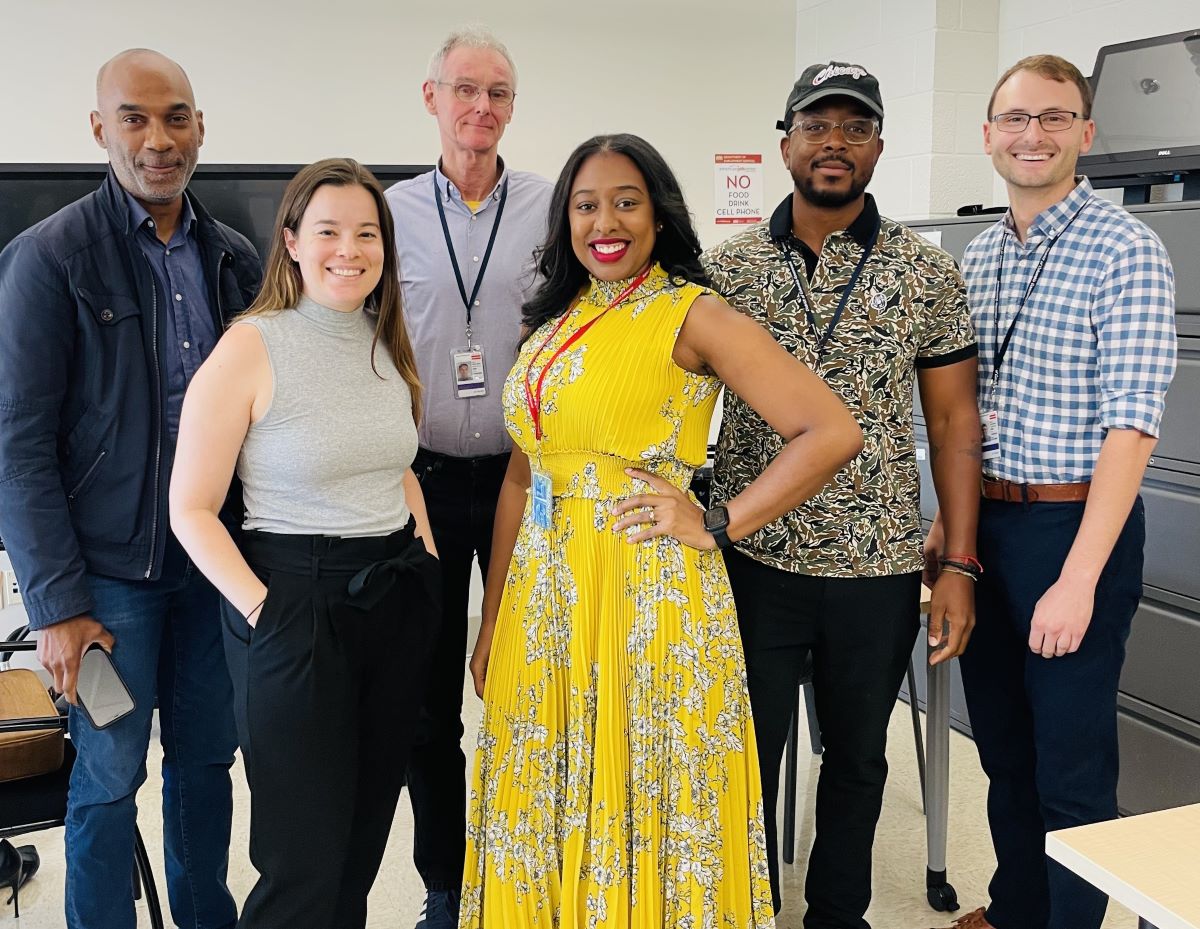What exactly has the district’s Innovation Team been up to in the two years since it was created?
The Innovation Team, also known as the i-team, was conceived in 2021 in a collaboration between Mayor Muriel Bowser and Bloomberg Philanthropies. The three-year initiative designated a group of folks to build new strategies for the city, working in three main phases: understanding the problem, generating and testing new ideas and delivering initiatives.
At present, the priorities for the i-team are set at the mayor’s direction. Right now, the team is working on hiring in DC government. But how those issues it prioritizes are solved isn’t a one-stop shop. Though tech is a large part of what the team does, the i-team does like to take a more holistic view. In the hiring issue, for example, Lindsay Quarles, senior project manager, said that a solution could be updating a website to make it work better for users. But it also could just mean retraining staff members on how to find talent.
“We don’t want to always assume that technology is the solution, but for sure, a lot of the big things that we come up with are technology-related,” Quarles told Technical.ly.
Director Jenny Kessler said that every day on the i-team is pretty different. She tries to keep a wider view of the work and its impact while others specialize in data, policy or operations. In each project, though, she said the agency focuses on a human-centered design process to find the best solution.
Plus, Quarles noted, the fact that the agency doesn’t have one distinct direction means that it’s open to tons of opportunities.
“We have this luxury of being able to focus on really cool and interesting things because we don’t have to do day-to-day operations,” Quarles said. “All of our agencies have things that they have to do, functions they have to provide to the people — and our whole function is to help them do that better.”
Since it was created two years ago, the i-team has been focusing on its project improving recruitment and hiring for DC government. To start, Kessler said the team really needed to learn what the problem was with hiring in DC. That meant talking to and interviewing job seekers, hiring managers at each of the agencies, as well as higher-ups and staff members at the DC Department of Human Resources (DCHR). It also meant working with the budget office, as it sets the hiring budgets, and even creating focus groups.
Matt Gerken, senior data scientist for the i-team, said that quantitative data, like hiring and applicant data from DCHR, has been a key part of the process, as well.
“Data has played a really important role in understanding what are the root causes of the challenges that are facing hiring in the districts,” Gerken said.
Right now, the team is in the prototyping phase, Kessler said. That means that they’re looking at what solutions would be best for job-seekers, which means going back to residents and stakeholders and getting their feedback on what would best help. Then, the team goes back to the office, compiles all the information and puts it into a new design that can be implemented. Right now, this often looks like storyboarding and having interactive conversations that go back and forth on how an idea could be improved or give a rating on what would work best.
Behind the scenes, the office also works with technical advisors from the Bloomberg Center for Public Innovation at Johns Hopkins University and uses Miro to share work across the organizations. Currently, they also use Figma to build high-fidelity prototypes that end-users can test out (though DC’s Office of the Chief Technology Officer would build any official tech or tools after implementation). The team also develops journey maps through Lucid to keep track of everything throughout the process.
“The purpose, really, behind the i-team is to bring a new way of thinking into government. And this thinking is a collaboration, working with your residents and having that feedback loop, which you oftentimes don’t see in government,” Kessler said. “It’s constantly iterating, reiterating and improving.”
Throughout the past stages of data-gathering, the team kept track of every idea that came up and ended up with around 200. They’ve since narrowed that down to 100, and are working on what’s possible to implement, which is phase two.
Before the end of the three years, the team also has to develop a public innovation strategy for the district. For this, it’ll be working with the mayor and other agencies to find out what innovation means to them and what they would like to see for the city. Instead of just handing agencies a checklist, this could look like collaboration with individual agencies for three-month sprints to teach them the processes the i-team follows every day.
But on the whole, Quarles hopes that through this process, DC’s residents see that their government does value innovation.
“This is a new team that we’ve never had before and so this should mean things are going to change,” Quarles said. “That we actually do see the places we can improve and we’re going to make those improvements happen.”







